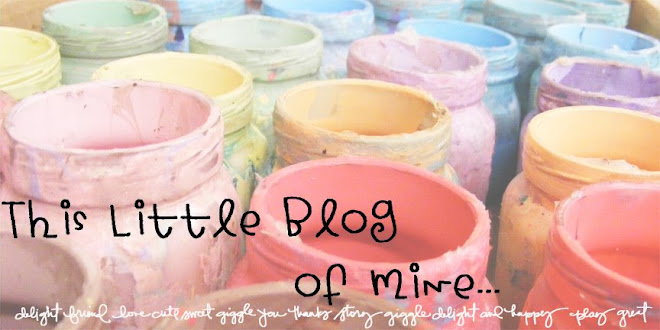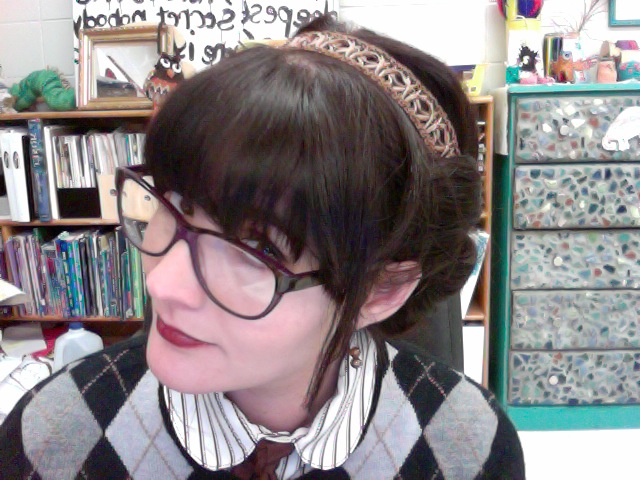This week, I found a quote from a book I am reading for my professional development plan at school.
Why is it that the best coaches often rise from the ranks of the almost- or not-so-great athletes, while the most gifted athletes rarely make the best coaches? Why is it that brilliant and sophisticated actors can't help others do something similar and are so often at a loss to describe how they do what they do? Meanwhile, unheralded thespians manage to unlock wold-class talent in others?
One cause may be this: superstars often don't have to pay meticulous attention to the what's-next and how-to of each step. The very thing that makes them brilliant, an intuitive and lightning-quick understanding of how to handle a given problem on the stage or the court or the field, keeps the most talented from recognizing how the rest of us, for whom the intuition does not come quick as silver, learn. The rest of us, who cannot see it once and then do it ourselves beginning to end, are more likely to take complex tasks and break them down into manageable steps. We move piecemeal toward mastery and need to remind ourselves over and over what step comes next. (Lemov p. 77)
The book is "Teach Like a Champion" by Doug Lemov the managing director of Uncommon Schools.
Whenever I am carrying the book around school, in an attempt to get some reading done (yeah, right), I'm always a little embarrassed of the book because the fact that I am reading it makes me feel pretentious....but so far the book has been a handy tool....with its '49 techniques to help put students on a path to college', it has given a name to many of the strategies that I already use and given some serious food for thought on ones that I should implement and don't.
For instance, I rarely use any questioning techniques in my classroom. The majority of what I do is performance based. I preform, the students observe and follow suit. When I say that I perform, I mean that I put on a real tap dance, a horse and pony show, complete with special voices, and jokes. I jump through hoops and I overly exaggerate the stories to emphasize my main points.
I model, illustrate and demonstrate and the students follow my lead, step-by-step.....adding in a bit of 'kid-flair' here-and-there making each artwork their own. Many of the materials we use in art require this sort of set-up...especially with 11 classes of kindergarten, I get into the same routine day-after-day.
Often, questioning opens the kindergarten classroom into a free-for-all of 'One time my kitten.....' or 'I'm a parent pick-up' or......leaving my questions floating in the breeze, while the classroom spins into a dead zone where neither learning nor anything productive is happening as I wait patiently for the student who raised their hand is stumbling through some mundane, off-subject tale with no ending.
Clearly many of the techniques in the book are intended for students aged 10 and up....most likely middle school.
But this book gives suggestions for using questioning in a very important way. It explains how to 'hold out for all the way' and require 'right is right'....making sure students answer correctly, instead of me settling for a half-truth in order to move on to the next step or the next question. I have already implemented this. Whenever a student gets an answer wrong, or they say 'I don't know,' I call on on another student, and then return to the one who was initially wrong and have them repeat the right answer. I've started implementing a rapid-fire questioning game at the end of art, cold calling some students, something I rarely did before this year.
Two other techniques including 'stretch-it' (which tests whether or not students know why the answer is what it is) and 'cold call' (you want everyone to pay attention so you call on anyone, even those who do not have their hand in the air.....not just as a classroom management technique, but because you genuinely want everyone to get it right, and know why they answered the way they did).
One day, while looking at a very famous woodblock
The Great Wave by the Japanese artist Hokusai, I asked a girl (who wasn't paying attention), "Jane, what do you see?" ......Silence. I waited. 'Jane, what do you see in this painting, what do you think it is about?".....Silence......"I don't know."......"You don't know? Well, look at it? I've already said what the title is....and other students have suggested what they see....just tell me something that you see?" (I pushed her, and she closed up. I was getting frustrated)
UGH!! Fatal flaw. I should've had someone else answer and then gone back and had her repeat what they said. I was frustrated with a little 1st grader giving up...so I was grasping for something....and coming up short.
As the day went on, I made a really amazing discovery. After looking at about 4 or 5 of Hokusai's 36-Views of Mt. Fuji, I asked students about the Great Wave. Standard questions, what do you see? but when I asked the first few classes "What do you think the artist wanted you to feel when you look at this painting?" Many kids blurted out Happy! When I pushed for "Happy, why?" They couldn't answer so they quickly changed their answer to Sad!
Finally, after a few minutes of this...them struggling to find the right words....I would bring a student up to the smartboard screen. "Now, put yourself in the image....if you were part of the scene, if you were in the painting, where would you be?"
"On a boat...in the water..."
"Okay....if you were on a boat.....and you saw that big wave....how would you feel?"
"Terrified. Afraid. Scared."
Okay!! Now we are getting somewhere. An aha! moment!!
I would bring up a couple more student to experience the great wave hovering over them. And I would ask additional questions like "Why would you be afraid?" "Would you even be thinking about the mountain if you saw such a big wave?"
When looking at and evaluating artwork, I know that I need to implement better questioning skills. That is my goal this year in the classroom. I really want to improve my questioning skills so that students are really LEARNING and not just COPYING what I do.





























